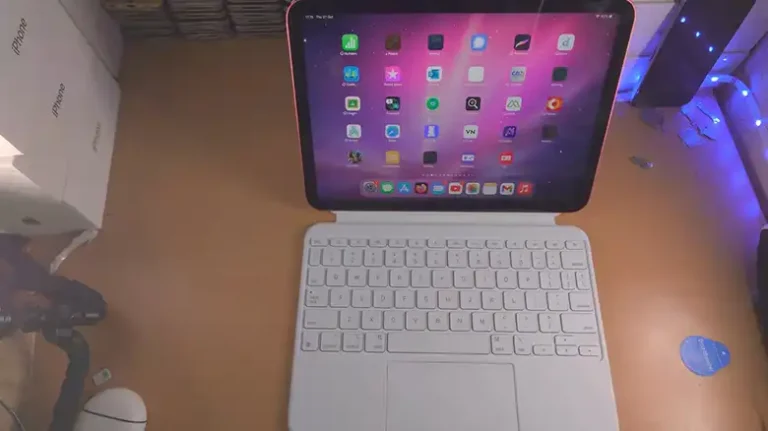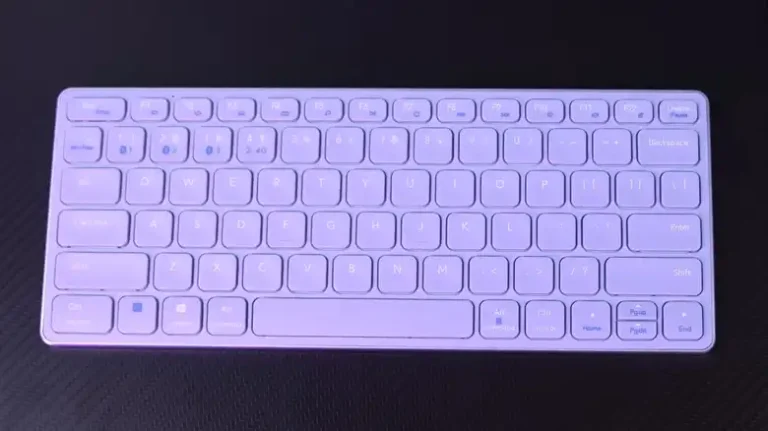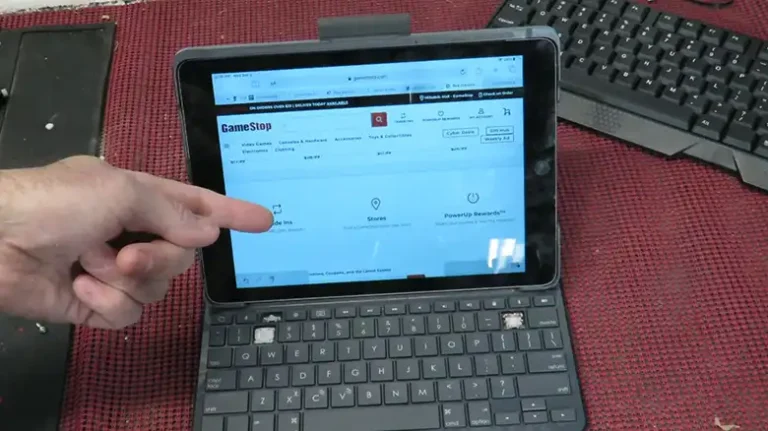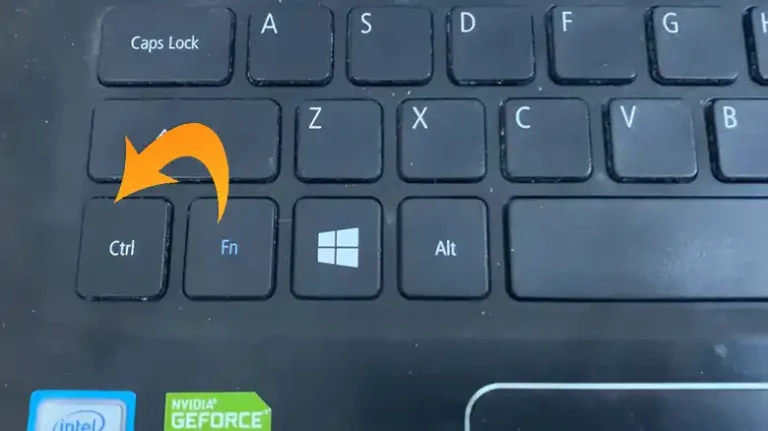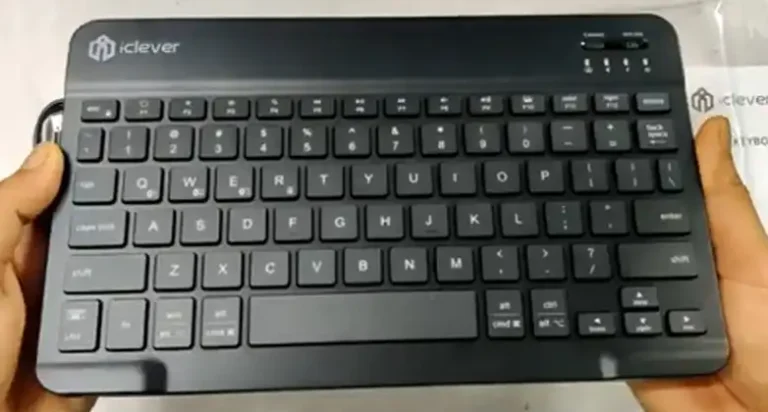Touchpad And Keyboard Not Working [FIXED]
The other day I sat down at my laptop ready to get some work done, but when I went to start typing I realized my keyboard wasn’t responding. Then when I tried to move the cursor with the touchpad, that wasn’t working either! This could be caused by outdated drivers or Windows settings conflicts. I was able to fix it by updating drivers and adjusting power settings. As someone who relies on my computer for both work and personal use, having an unresponsive keyboard and touchpad was incredibly frustrating. However, after some troubleshooting, I was able to get both my keyboard and touchpad functioning again

Identifying the Issue
The first thing I did was try to pinpoint exactly what wasn’t working. I plugged in an external mouse and found that was responsive, indicating the issue was isolated to the built-in keyboard and touchpad. I hadn’t installed any new software or made any hardware changes recently, so I ruled those out as potential causes. Based on the symptoms, I determined it was most likely a driver issue or a problem with Windows recognizing the devices.
Ways to Bring Your Touchpad And Keyboard Back to Work
When your laptop’s touchpad and keyboard are not working, it can be caused by a variety of factors, and troubleshooting the issue may require multiple steps. Here’s a guide to help you diagnose and potentially fix the problem –
Way 1: Reboot Your Laptop
A simple yet effective solution to begin with is rebooting your laptop. Sometimes, temporary glitches can be resolved by performing a full restart, as opposed to just shutting down and powering on again. This step often sets the stage for further troubleshooting.
Way 2: Check for Physical Issues
To ensure your laptop’s keyboard and touchpad function correctly, start by examining them for physical obstructions or damage. Debris or a spill can disrupt their functionality, and a careful cleaning and inspection can identify and resolve such problems.
Way 3: Disconnect External Devices
External peripherals like USB keyboards or mice can occasionally lead to conflicts with your laptop’s built-in keyboard and touchpad. Disconnect these external devices and check if this resolves the issue, as it could be a source of interference.
Way 4: Update or Reinstall Drivers
Windows:
a. In Device Manager, you can also try uninstalling and then reinstalling the keyboard and touchpad drivers.
b. Visit the manufacturer’s website for your laptop to download and install the latest drivers.
macOS:
a. Check for macOS updates in “System Preferences” > “Software Update.”
b. Reset the NVRAM/PRAM (follow your laptop manufacturer’s instructions).
Way 5: Use the Troubleshooter
If the issue persists, you may want to rely on your operating system’s built-in troubleshooters. On Windows, navigate to Settings > Update & Security > Troubleshoot and run both the keyboard and hardware and device troubleshooters. For macOS users, you can explore other options due to the absence of such troubleshooters.
Way 6: Check Windows Settings
When the driver update didn’t resolve the issue, I dug further into the Windows settings. I went to Control Panel > Hardware and Sound > Devices and Printers and checked that both the keyboard and touchpad were showing up properly without any errors or conflicts. Everything looked fine there.
Next, I went to Control Panel > Hardware and Sound > Power Options > Change Plan Settings and made sure that “USB selective suspend” was disabled. This setting can sometimes lead to USB devices disconnecting, so turning it off prevented that from interfering.
Way 7: Check Device Manager (Windows) or System Preferences (macOS)
Windows:
a. Right-click on the “Start” button and select “Device Manager.”
b. Expand the “Keyboards” and “Mice and other pointing devices” sections.
c. Right-click on your keyboard and touchpad devices and select “Update driver” if available.
macOS:
a. Open “System Preferences.”
b. Click on “Keyboard” and “Trackpad” to check and adjust settings.
Way 8: Boot in Safe Mode
To identify potential third-party software or driver issues, boot your laptop in Safe Mode. If your keyboard and touchpad work correctly in Safe Mode, it may suggest an external influence causing the problem.
Way 9: Malware and Viruses
Security should not be overlooked. Run a comprehensive system scan with your antivirus software to rule out the possibility of malware or viruses affecting your laptop’s functionality.
Way 10: Check for Hardware Issues
When none of the above steps yield results, there may be an underlying hardware problem. In such cases, it’s recommended to reach out to the laptop manufacturer’s customer support or consult a professional technician to diagnose and address the hardware issue.
Way 11: Use External Keyboard and Mouse
As a temporary workaround, you can connect an external USB keyboard and mouse to continue using your laptop while you troubleshoot or repair the built-in keyboard and touchpad.
Way 12: System Restore (Windows) or Time Machine Restore (macOS)
If the issues began following a recent software change, consider using System Restore (Windows) or Time Machine Restore (macOS) to revert to a previous system state when the keyboard and touchpad were functioning correctly. This step may help in situations where software updates or installations caused the problem.
NOTE: Not all of them will solve the problem for you. It’ll work based on the actual cause that’s the culprit in your case. So, you need to try them one by one until the issue gets solved.
People Also Ask
Why did my touchpad and keyboard stop working?
Some common reasons are outdated drivers, Windows settings conflicts, USB suspend settings, and simple hardware failures. The keyboard and touchpad may stop working independently or at the same time.
How can I prevent this issue in the future?
Keep your drivers updated, especially the keyboard, touchpad, and other input device drivers. Don’t change any advanced power or USB settings without understanding what they do. Consider using System Restore points as backups if issues emerge.
What if updating drivers does not fix the issue?
Check Windows settings related to power management and USB controllers. Run the Hardware and Devices troubleshooter. Try updating the BIOS as well. If nothing helps, a system restore or reset may be necessary.
Is this issue specific to laptops only?
Mostly, yes. Desktop keyboards and mice connect differently and are rarely impacted in this way. However, desktop users could see similar problems from the same root causes.
Can keys become disabled on a keyboard?
Yes, it’s possible for individual keys to stop working on a keyboard even if other keys still type normally. This is likely a hardware problem affecting the switch or sensor underneath that key.
Conclusion
Unresponsive keyboards and touchpads are certainly annoying setbacks, but as I learned, there are a number of steps you can take to resolve them. Checking drivers, Windows settings, running troubleshooting utilities, and restoring the system can all help get your laptop input devices back up and running. With the right persistence and patience, you can troubleshoot the issue without the hassle or expense of replacing the hardware itself.
![[Explained] Can Trojan Affect Keyboard?](https://keyboardhunter.com/wp-content/uploads/2023/02/Can-Trojan-Affect-Keyboard-768x431.webp)
